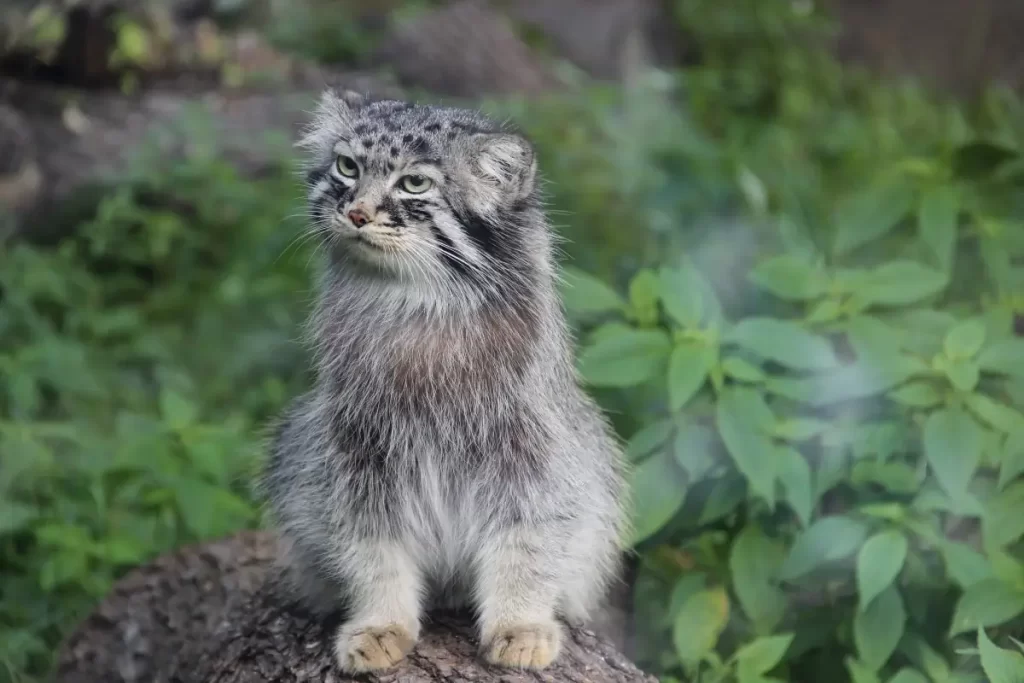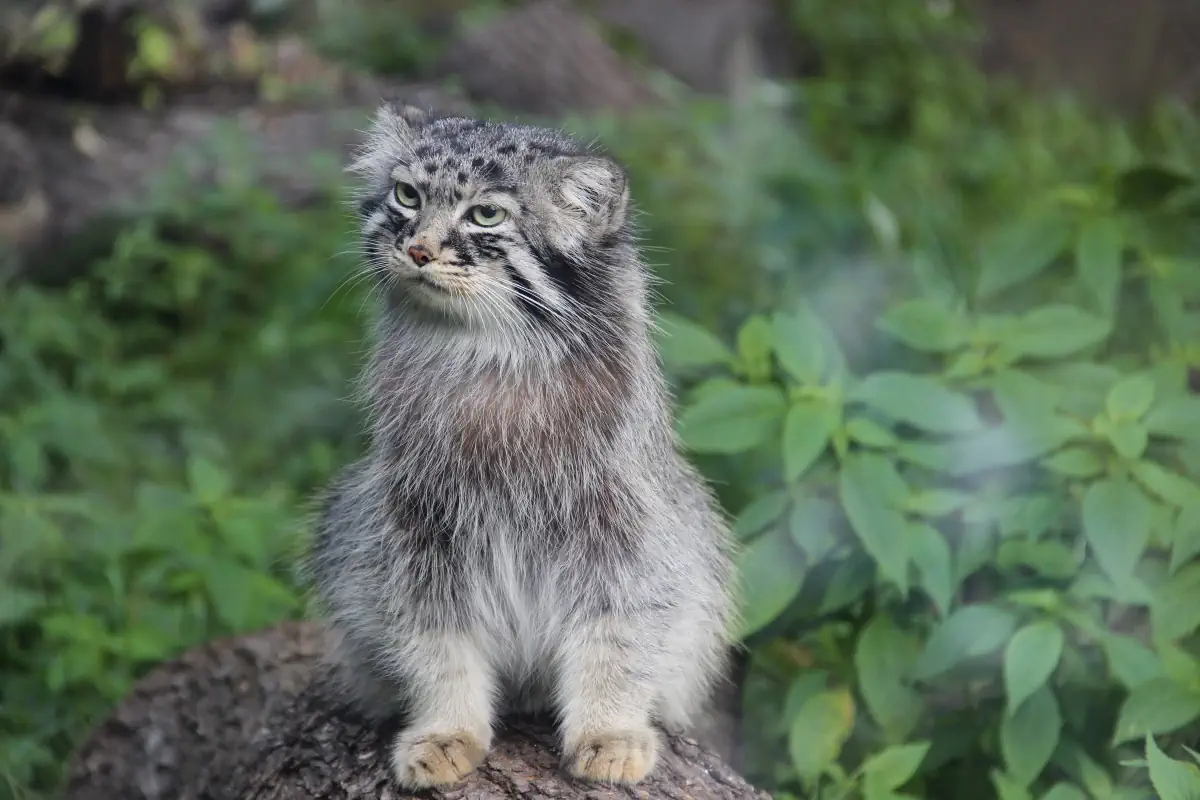Pallas’s cat (scientific name: Felis manul or Otocolobus manul), also known as simply manul, is a small Central Asian wild cat. Its characteristic face, short nose, and long and dense light grey fur make the cat easily distinguishable even from a distance. Here are 12 amazing Pallas’s cat facts.
1. It is named after the naturalist Peter Pallas
German naturalist Peter Simon Pallas (22 September 1741 – 8 September 1811) first described this longhaired wildcat in 1776. Other names for this cat breed, named after Peter Pallas, are Pallas’s cat or manul.
Peter Pallas theorized that this round-faced, long-haired cat breed is the ancestor of the Persian cat.
But later on, it is accepted that he was wrong because of this theory. And then, the scientific name of the cat was changed and manul Otocolobus (ugly-eared) was put for Felis manual.

2. Pallas’s cat has unusual ears
Some people think Pallas’s cat’s ears are ugly, while others think it’s cute.
The round ears that lie flat on the sides of their head are one of the most distinctive features of these cats.
Pallas’s cat’s ears help him hide, in this way, they do not take action to not reveal the position of the animal while hiding or hunting.
3. They are not actually fat
Pallas cats look larger and heavier than they actually are due to their long, thick coats and stocky builds, but they are roughly the same size as house cats.
Their bodies vary between 46-65 cm (18 to 25.5 in) in length. Their tails are around 21-31 cm (8+1⁄2 to 12 in) long, and their weight is between 2.5 to 4.5 kg (5 lb 8 oz to 9 lb 15 oz).
4. They have an extraordinary camouflage ability
The stripes and color of their plumage easily adapt to the environment. This camouflage ability gives Pallas cats, who are weak runners, an advantage when hunting.
5. Their fur color changes
Pallas’s cat can protect itself from the cold of the environment in which it lives. Its fur shows significant color variations depending on its location and season, making it unnoticeable in its habitat.
Therefore, the hue of their fur varies depending on the time of year, it becomes much more whitish in winter, and more grayish when there is no snow on the rocks in warmer seasons.
Also, for this reason, its fur ranges from ashy gray to dark yellow tones in various regions.
6. Pallas’s cat is a perfect hunter
This cat is an expert at tracking and ambushing the animals in the rocky steppes where it lives.
They mostly feed on small mammals known as pikas (a small, mountain-dwelling mammal found in Asia and North America, they resemble their close relative, the rabbit, but with short, rounded ears as in rats) and other small rodents.
It has also been known to sometimes eat small insectivorous birds.

Related: Amazing Caracal Facts
7. They are nocturnal and solitary
They are most active in the evening twilight and early morning hours.
During the day, they sleep in small dens in rock crevices that they find safe and are not seen around. Pallas cats, which are solitary hunters, are somewhat clumsy cats, as can be seen from their bodies. When faced with a threat, they prefer to hide rather than run.
8. They are not friendly
Pallas’s cats do not like each other very much. They may be adorable cats with fluffy fur, but they are not the cutest, most friendly creatures in the world. In fact, they are very aggressive.
9. They make various sounds
When threatened, they usually don’t hiss or purr, but rather snarls and grunts out of fear. Their sound has been described as the howling of a small dog rather than the meow of a domestic cat. They can also purr like a house cat.
10. Their mating times are short
Females are in estrus for only 26 to 42 hours.
Pregnancy lasts 74 – 75 days, and 3 – 6 puppies can be born from one pregnancy.
Kittens weigh about 300 grams (0.66 lbs) and are 10-15 cm (4-6 in) tall.
Kittens that start hunting at the age of 3-4 months go to live alone like their ancestors, starting to hunt and completely giving up breast milk, like other cat species.
11. They live around 12 years in the wild
The average life expectancy of the Pallas cat is 12 years. However, this may vary depending on genetic and environmental factors.
12. Pallas’s cat has the longest and densest fur of any cat
Their fur is perfectly evolved for the harsh and cold environment. It is long, soft, and dense with up to 9,000 hairs per cm2 (58,000 hairs/square in) – the longest and densest fur of any cat.

Some not so-amazing Pallas’s cat facts
The number of Pallas’s cats decreasing rapidly. Agricultural activities, mining, and poisoning programs to diminish pika and marmot populations are all causes that contribute to their low numbers.
They are also killed in wolf and fox traps, as well as by domestic dogs. Despite international trade limits and legal protection in some countries, they are frequently killed for their long, dense fur.
The Pallas cat is classified “near threatened” in the IUCN Red List (The International Union for Conservation of Nature Red List of Threatened Species).
Their population especially decreased rapidly until the 1980s due to hunting and other human-induced reasons, is mostly hunted for its fur. Of course, hunting is illegal in most of its habitat today. However, poaching still exists. People can also cause death through wild animal smuggling.
Sources
- Pallas’s cat on Wikipedia
- Pallas’s cat on Animalia.bio
- Sloth Facts: 10 Amazing things about these adorable mammals - August 12, 2022
- 10 Amazing Koala Facts - February 18, 2022
- 10 Amazing Humpback Whale Facts - December 22, 2021

Nothing mentioned about the Pallas cat’s distinctive optics.
I thought that cats meowed to communicate with humans. Why does the Paula’s cat meow?